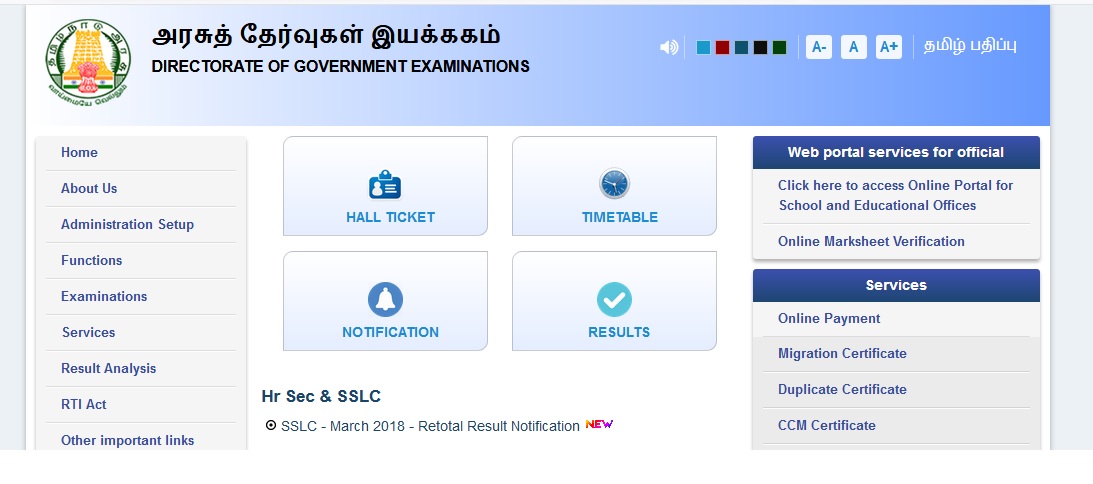DGE Tamilnadu Class XII Botany Sample Question Paper : Directorate of Government Examination
Name of the Board : Tamilnadu Directorate of Government Examination
Name of the Exam : HSC – XII STD
Subject : Botany
Document Type : Sample Question Paper
Website : http://dge.tn.gov.in/
Download Model/Sample Question Paper : https://www.pdfquestion.in/uploads/858512Botany.pdf
DGE TN Class XII Botany Sample Question Paper
Time allowed : 3.00 Hrs
Maximum Marks : 150
Note :
1. Answer all the questions.
2. Choose and write the correct option.
3. Each question carries one mark.
Related : Directorate of Government Examination DGE Tamilnadu Class XII Business Mathematics Sample Question Paper : www.pdfquestion.in/8579.html
1. Bentham and Hooker’s classification of plants is an example for
a. artificial system
b. natural system
c. phylogenetic system
d. sexual system
2. ‘Origin of species’ had given stimulus for the creation of classification of plants called
a. sexual system
b. natural system
c. phylogenetic system
d. artificial system
3. Plants having flowers with petals fused with one another are placed under
a. polypetalae
b. gamopetalae
c. apetalae
d. calyciflorae

4. Solanaceae is placed under
a. malvalaes
b. rosales
c. polemoniales
d. unisexuales
5. Monothecous anthers are seen in the members of
a. Malvaceae
b. Asteraceae
c. Fabaceae
d. Liliaceae
6. Vexillary aestivation is seen in the corolla of
a. Malavaceae
b. Asteraceae
c. Solanaceae
d. Fabaceae
7. The type of aestivation seen in the perianth of female flowers of Cocos nucifera is
a. twisted
b. descendingly imbricate
c. valvate
d. ascendingly imbricate
8. Lacunate collenchyma is seen in
a. Ipomea
b. Helianthus
c. Datura
d. Nicotiana
9. Root hair develops from
a. trichoblast
b. trichome
c. subsidiary cell
d. rhizodermis
10. Hypodermis of maize stem is made up of
a. parenchyma
b. collenchyma
c. sclerenchyma
d. chlorenchyma
11. The vascular bundles are collateral, open and endarch in
a. monocot stem
b. monocot root
c. dicot root
d. dicot stem
12. Bundle sheath in dicot leaf is made up of
a. chlorenchyma
b. parenchyma
c. sclerenchyma
d. collenchyma
13. One of the stop codons is
a. UAA
b. AAA
c. CCC
d. CCA
14. The unit of genetic map is
a. codon
b. lux
c. micrometre
d. Morgan
15. The 17th human chromosome is
a. metacentric
b. submetacentric
c. telocentric
d. acrocentric
16. Trisomy is represented by
a. 2n – 1
b. 2n – 2
c. 2n + 2
d. 2n + 1
17. Unorganized mass of undifferentiated tissue is called
a. explant
b. callus
c. somatic embryo
d. inoculum
18. The enzyme which cleaves DNA at very specific places is called
a. ligase
b. polymerase
c. primase
d. restriction enzyme
19. The fusogenic agent used in protoplasmic fusion is
a. manitol
b. sorbitol
c. polyethylene glycol
d. hypochlorite acid
20. The name enzyme was coined by
a. Buchner
b. Pasteur
c. Fischer
d. Kuhne
21. Protein component of an enzyme is called
a. co-factor
b. holoenzyme
c. apoenzyme
d. prosthetic group
22. Which one of the following is essential for the formation of chlorophyll?
a. Manganese
b. Magnesium
c. Iron
d. Copper
23. Which one of the following is a 4 carbon compound?
a. Glucose
b. DHAP
c. Xylulose
d. Erythrose
24. Hatch-Slack pathway is also known as
a. glycolysis
b. C2 Pathway
c. C3 Pathway
d. C4 Pathway
25. An example for insectivorous plant is
a. Viscum
b. Cuscuta
c. Monotropa
d. Drosera
26. Glycolysis takes place in
a. mitochondrion
b. cytoplasm
c. ribosome
d. peroxisome
27. The rate of growth in length can be measured by
a. Lever auxanometer
b. test tube and funnel experiment
c. Kuhne’s experiment
c. Ganong’s experiment
28. Which of the following is widely employed as a successful biofertilizer in Indian rice field?
a. Sesbania rostrata
b. Acacia nilotica
c. Indigofera linifolia
d. Azolla pinnata
29. Tikka disease of groundnut is caused by
a. Pyricularia oryzae
b. Cercospora personata
c. Xanthomonas citrii
d. Tungro virus
30. The plant product used to treat heart diseases is
a. morphine
b. quinine
c. digoxin
d. ephedrine
Section B : 15 x 3 = 45
Note :
1. Answer any 15 questions.
2. Each question carries 3 marks.
31. What is type specimen?
32. Write the botanical names of any two medicinal plants of Asteraceae and state their uses.
33. Write a note on androecium of Schizanthus pinnatus.
34. Draw the floral diagram of disc floret of Tridax and write its floral formula.
35. Write any three anatomical differences between gymnosperm and angiosperm.
36. What is genome?
37. Write any three significance of crossing over.
38. Write three sentences about genetic code.
39. Define recombinant DNA.
40. How is cell wall removed from intact cells by enzymes?
41. Define energy of activation.
42. Differentiate PS I from PS II.
43. What is photolysis of water?
44. Under what conditions does cyclic electron transport take place?
45. Write the overall reaction of glycolysis.
46. What is electron transport chain with reference to respiration? State its significance.
47. Define respiratory quotient. What is the respiratory quotient value of glucose?
48. What is bolting?
49. Explain genetically modified organisms in biological warfare.
50. Write any three economic importance of groundnut.
[embeddoc url=”https://www.pdfquestion.in/uploads/858512Botany.pdf”]